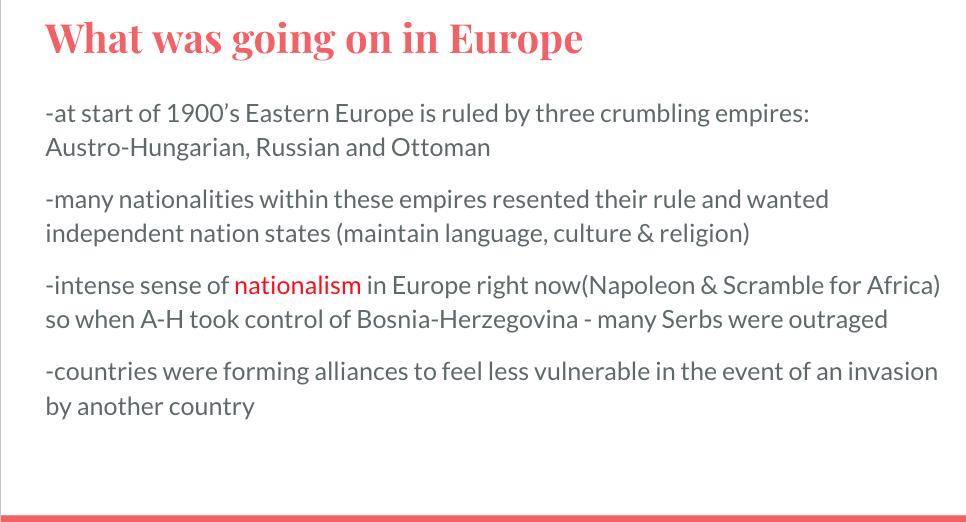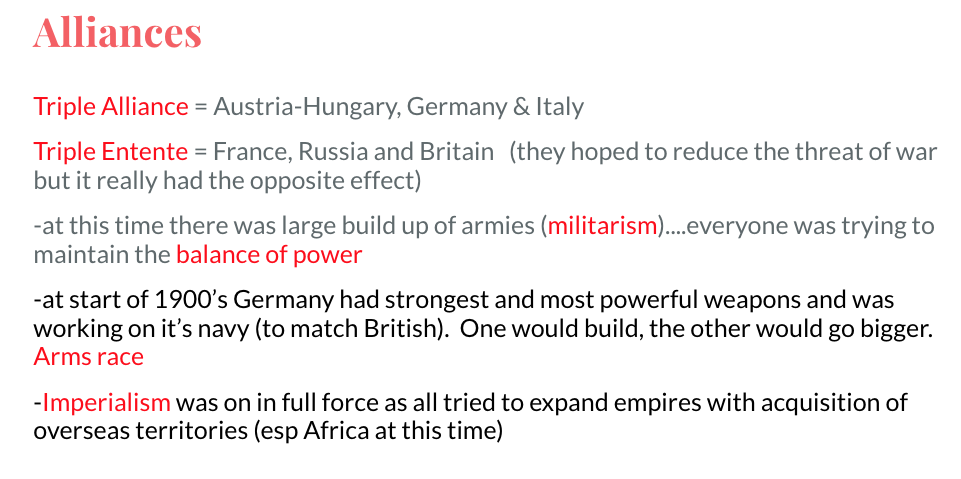This week in social studies 9 we learned about the start of World War I and the reasons for the start of World War I or causes. we watched the first hour of the movie 1917. You can watch the movie 1917 off of our school website in the library area you should find a link. We also worked on World War I project there is an outline on the blog that will also have a number of topic choices you will need to get the sheet for the notes for the project as well as the movie sheet. Finally we also worked on a map of Europe in 1914 to get an idea of the different alliances and as well as who joined which Alliance.
Some important dates:
Monday, finish movie 1917
Tuesday, work on projects
Wednesday double block talk about different aspects of World War I including some important info from the movie and the war on the homefront.
Friday, projects are due first groups will do presentations
Monday June 16th finish group presentations and review sheets for the exam
Thursday June 19th review for the final exam
Friday June 20th final exam




